Intercropping Layouts
Why Intercropping, and why organized?
- Pest Control: Certain plants can deter pests, reducing the need for chemical pesticides.
- Nutrient Use: Different crops can utilize soil nutrients more efficiently, leading to healthier plants.
- Space Optimization: You can grow more in less space, making our farm more productive.
- Space Organization: We will have better and general access to each row and all the crops.
Intercropping Layouts for Optimal Yield
This presentation outlines diverse intercropping layouts tailored to our farm’s objectives, specifically focusing on forage, market, and personal consumption needs.
Layout Strategy:
The primary framework employs a row system, with coconut trees strategically placed in rows 1 and 4. Rows 2 and 3 are dedicated to intercropping.
Layout Designs:
- Shape: Predominantly utilizing triangular configurations, with some square layouts.
- Purpose-Driven: Each layout is customized to maximize yield based on the intended crop use (forage, market, or personal consumption).
- Accessibility: The distance of the rows leaves enough space to access the rows with a small farm vehicle, like a Kubota or small tractor. No need for heavy carrying by hand.
Conclusion:
These layouts are designed to promote efficient resource utilization and enhance overall farm productivity.
General Consideration
This rule here supercides each drawing. Notwithstanding with the dimensions in the drawings, each row is measured from coconut to coconut tree, 3 meters
- Row Distance: 2 rows between 2 coconut trees at 3 meter distance.
Thus, 3 and 6 meters, one row for intercropping. - Banana Plants: In their designated row we plant them 3 meters apart.
Thus, 3, 6, 9 meters. - Madre de Aqua Tree, Papaya Trees: 2.25 meters apart in their designated row.
Thus 2.25, 4.5, 6.75, 9 meters. - Big Fruit Trees: We plant them if not in designated rows, in their crosshair between 4 coconut trees.
Thus, 4.5 and 4.5 meters crossed by 7.5 and 7.5 meters, like a diamond shaped cross.
1. Pig Section Layout
Coconuts, Bananas and Coffee, plus Papaya.

2. Hybrid Sections at the West Access Road
Mostly for forage for future goats, pigs, and chicken. This layout has the option of an central fruit tree, surrounded by Madre de Aqua Trees, which are easily propagated on our farm. The fruit tree could be Rambutan, Star Apple, Magar, or similar. And the same is true for papaya. Remember: Papaya and also Banana is very good for wine. And I mean real wine, and also what we call PUNCH in Germany. Good alcohol. Very easy.
Main Animal Forage
Beside costly commercial feeds there is a lot on a farm to feed to your animals. It is healthier, less costly, and self sustainable.
- Pigs: Saba Leaf trunks, no Lakatan or Latundan! Papaya fruites, Bananas
- Poultry: Shredded Madre de Aqua leaves, Bananas and papaya fruits.
- Goats: Napier grass, Madre de Aqua leaves and young buds, grass.
Hybrid Sections at the West Access Road
The same layout as before, just without Fruit Trees and more heavily leaning on Madre de Aqua. The layout is triangular as most portions on our farm.


3. Lower, Middle, and Upper Island Hybrid Sections, including East Barangay Road Section
This layout still leaves place for coffee trees, left and right of the banana plants. I am showing our enhanced concept here. It will, like all other arrangements leave space for a small farm vehicle to drive in between the planting for harvesting or for maintenance work. No need to carry heavy loads on workers shoulders.

Photo Documentation of Layout Application
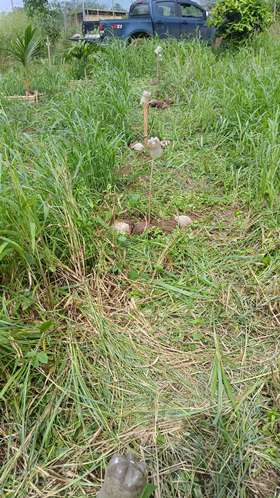
In Rows distance at 2.25 m
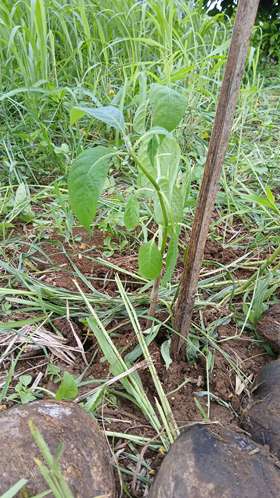
Madre de Aqua
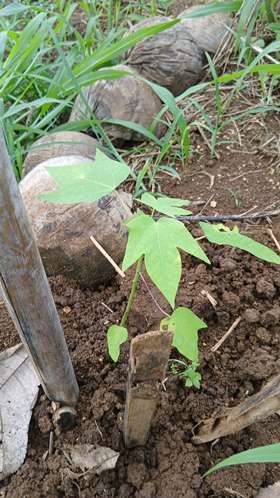
Papaya

Length of Rows,
9 m
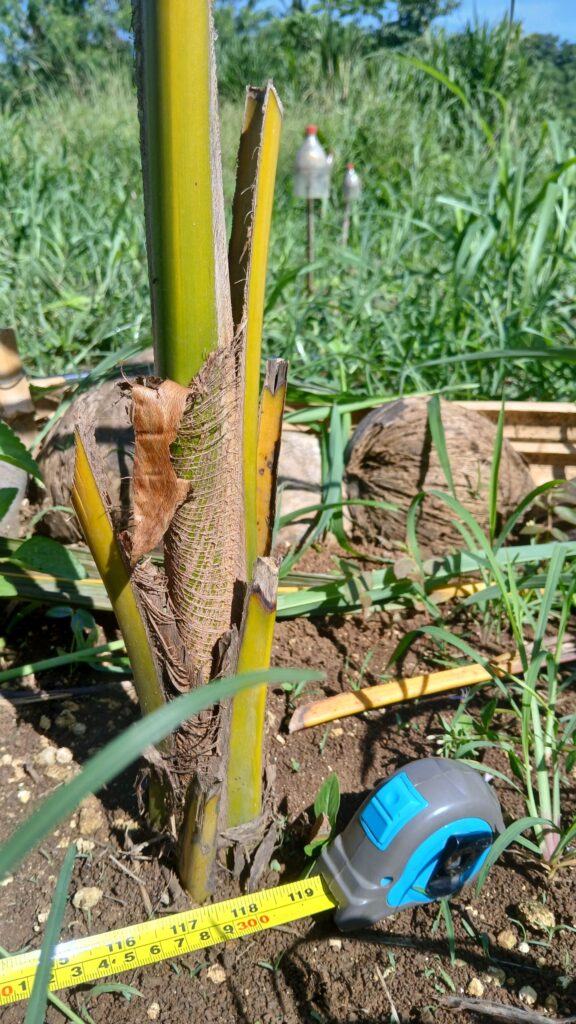
Make the mark
and draw the line
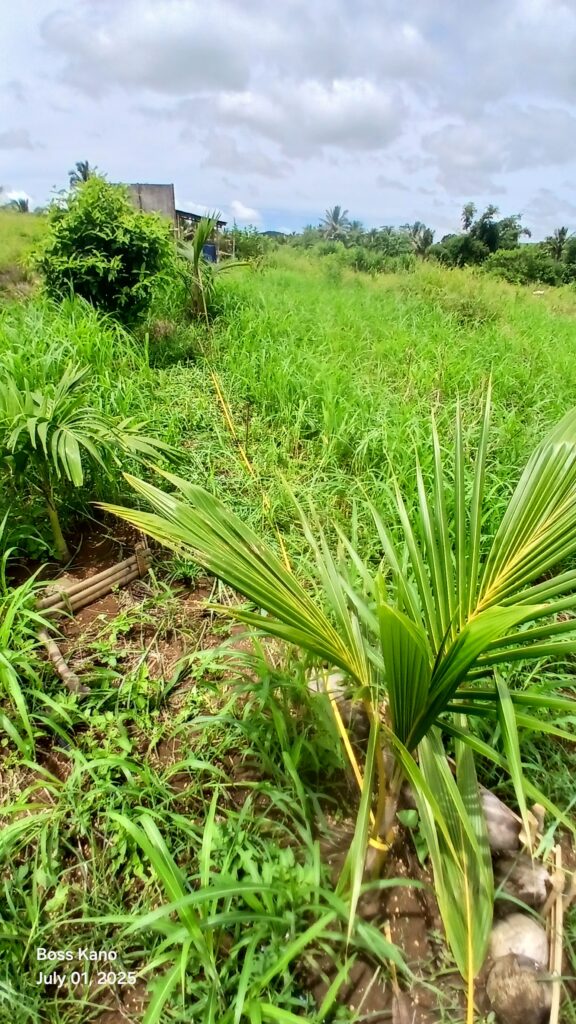
Distance between Rows, 3 m
4. EBRS, CS, and EES
Some rows are designated like this. Just the middle row is planted with banana plants and we still have space in ROWS 2,3,5, and 6 for other crops. This could be TUMERIC, lavender, rosemary, and some varieties of mint

5. DCS, WBRS, and QDS
This is the common layout for the Quack Doctor Section and the Devine Couple Section. Mostly squared due to the layout of the land. The lower farm is following the triangular layout, except in the West Cliff and NE Cliff Section, where the slopes are contoured

